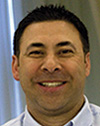
Post-secondary education in Canada is in the midst of a crisis — a fundamental transformation that is having disastrous effects on our students, our institutions, our communities and our country. In recent years we have witnessed disturbing economic, social and political changes which have laid the foundation for this neo-liberal transformation.
Consider the troubling trends: a significant shift toward the use of contingent academic staff; the marginalization of basic research in favour of research driven by private interests; a reduction in public funding, forcing our institutions to become more dependent on private support; and a diminishing academic staff voice in institutional decisions as a more corporate managerial culture supplants traditional collegial governance.
Amid this, our institutions seem silent at best and, more often than not, appear to be active collaborators in this transformation. From within, the ability of academic staff to influence the strategic directions of our institutions on important academic matters has been seriously weakened as top-down, corporate-style, decision-making has taken over.
Senates and other governing academic bodies, which ought to be the fora through which academic staff members exercise their voices, have become ineffective or have been relegated to dealing only with meaningless issues.
So, then, where does the push back originate? From my perspective, CAUT and its individual member associations across the country represent the only organizational voice fully committed to a principled stand against this transformation in all its forms. No other federal, provincial, public or private organization, or alliance of organizations appears to be taking up the challenge. The one exception to this is our ally, the Canadian Federation of Students.
Academic staff associations continue to be in the best position to champion the cause of post-secondary education. And, without a doubt, unionization has been a substantial driving force in facilitating this. Collective bargaining has provided a mechanism by which academic staff members have been able to gain control over the terms and conditions of their employment, almost all of which have a direct impact on the quality and integrity of our post-secondary education system. We have all heard the adage that “our working conditions are students’ learning conditions.” It is most certainly true.
As we know, academic staff associations have been extremely successful at unionizing. In Canada, the post-secondary education sector has the highest union density of any employment sector in the country. The overwhelming majority of CAUT’s members are unionized. Most have been for some time, but, despite that, the transformation appears to be relentlessly moving forward. So what more do we need to do? The answer, I suggest, lies in how we position ourselves to take up the challenge.
It is no secret that an academic staff association draws its power from only one source — its membership. Members’ commitment to their association, their willingness to work to achieve specific objectives and their sense of ownership of the association are all critical to the organization’s overall success. To be effective, everything an association does must build member involvement in and attachment to the organization. Members must be mobilized to build real power. They must feel that an attack on their association is an attack on each of them.
The vast majority of our associations struggle to engage and mobilize their members in a substantial, long-term way that goes beyond, for instance, the one-time action we see during a strike. While I believe each of us has a duty to our associations, it is much too easy to point the finger at individual members and say, “You need to get involved and support your union.” Rather, associations have to engage in serious reflection about how best to provide opportunities for members to mobilize in valuable and sustainable ways to meet the current challenges.
For its part, CAUT’s executive committee has recently initiated its own discussion about how the organization can most effectively direct its work in defense of post-secondary education and how it can best support local associations in the battle. Over the next while, we intend to engage members at Council on this topic to identify and establish collective direction and action. In the meantime, though, two thoughts merit consideration.
First, there seems to be a particular apprehension among academics, that what we do is not a job, but rather a profession, and, therefore, the work of our associations somehow falls outside our identities as teachers and scholars. Unfortunately, this perpetuates the idea that association work is something we volunteer to do only if we can spare the time away from our “real” academic work.
It is critical for us to think about how we reposition our associations’ work in defending post-secondary education, and our profession, so as to be seen as an integral part of our normal academic duties. In essence, how do we create value in this work for our members?
Second, I firmly believe that our associations’ work must go beyond the scope of collective agreements if we are to be effective as champions for post-secondary education. Certainly, the extent of the threats faced by the post-secondary education sector comprises many issues which cannot be tackled if we limit our actions to the provisions of our agreements. Additionally, we cannot discount the fact that our agreements are not immune to being undermined by legislative or judicial action. Consequently, we will have to take a broader view of our work and become much more political in our activities if we are to meet the challenges we face.
So, who and how? We, the academic staff members and associations across this country, must collectively take up the challenge in defense of post-secondary education and our profession. Few others will. As for the how, we have work to do, but I am confident our discussions will show us the way.